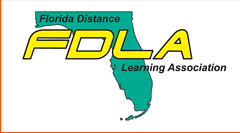Developing an After-School Program to Increase STEM Interest, Awareness and Knowledge of Young Hispanic Females in a Title I High School
Start
9-30-2020 2:00 PM
End
9-30-2020 3:00 PM
Short Description
The under-representation of minority females from low-income families in STEM-related educational programs is well documented. Many educators believe this problem begins at an early age and that disenfranchised students are not afforded the same educational opportunities as students from other demographic backgrounds. The purpose of this presentation is to describe the development and implementation of a series of STEM-focused after-school workshops at an inner-city Title 1 high school.
Abstract
Educators, politicians, and industry professionals note that the number of opportunities for workers in the science, technology, engineering, and mathematics (STEM) fields grow exponentially over time. Accordingly, emphasis is placed on schools to produce graduates capable of filling these positions. While these efforts are promising, there is a notable absence of females and minorities in the STEM professions. Many educators believe the lack of interest in the STEM field begins at an early age, and disenfranchised students are not afforded the opportunities given to students in more affluent schools. The purpose of this presentation is to describe the development and implementation of a series of STEM-focused after-school workshops at a Title 1 high school in West Palm Beach, Florida. These workshops were presented in conjunction with STEM professionals from the South Florida Science Center and Aquarium, faculty from Nova Southeastern University, local businesses, and industry. Ninth-grade female students, primarily from an ethnic minority, low socio-economic background, were recruited with their STEM awareness, interest, and knowledge measured at the beginning of the academic year. Due to the closure of schools due to the COVID-19 pandemic, the workshops were discontinued, and teachers were not able to measure these same constructs at the end of the academic year. This presentation will conclude with the insight gained from discussions with teachers as to how this same type of study can be presented solely in an online environment.
Format
Concurrent Session
Institutional level targeted
K-12
Developing an After-School Program to Increase STEM Interest, Awareness and Knowledge of Young Hispanic Females in a Title I High School
Educators, politicians, and industry professionals note that the number of opportunities for workers in the science, technology, engineering, and mathematics (STEM) fields grow exponentially over time. Accordingly, emphasis is placed on schools to produce graduates capable of filling these positions. While these efforts are promising, there is a notable absence of females and minorities in the STEM professions. Many educators believe the lack of interest in the STEM field begins at an early age, and disenfranchised students are not afforded the opportunities given to students in more affluent schools. The purpose of this presentation is to describe the development and implementation of a series of STEM-focused after-school workshops at a Title 1 high school in West Palm Beach, Florida. These workshops were presented in conjunction with STEM professionals from the South Florida Science Center and Aquarium, faculty from Nova Southeastern University, local businesses, and industry. Ninth-grade female students, primarily from an ethnic minority, low socio-economic background, were recruited with their STEM awareness, interest, and knowledge measured at the beginning of the academic year. Due to the closure of schools due to the COVID-19 pandemic, the workshops were discontinued, and teachers were not able to measure these same constructs at the end of the academic year. This presentation will conclude with the insight gained from discussions with teachers as to how this same type of study can be presented solely in an online environment.

